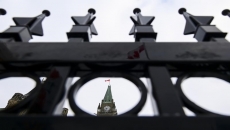The Bank of Canada is keeping its key interest rate target on hold as it raises its outlook for economic growth this year.
The key rate remains at 0.25 per cent where it has held steady for more than a year.
The decision came as the Bank of Canada raised its prediction for economic growth this year to 6.5 per cent, up from an earlier forecast of 4.0 per cent.
#ICYMI: We remain committed to holding the policy interest rate at the effective lower bound until economic slack is absorbed so that the 2 percent inflation target is sustainably achieved. #economy #cdnecon https://t.co/3sYxdp63JP pic.twitter.com/fDgXzIZDfY
— Bank of Canada (@bankofcanada) April 21, 2021
Economic growth is expected to moderate after that, according to the central bank’s quarterly outlook report.
The improving conditions are why the bank also said Wednesday it will ease off federal government bond purchases which are part of its quantitative-easing program designed to aid the economy.
The Bank of Canada said it plans to keep up its efforts to help the economy until slack is absorbed and inflation is back at its two per cent target, which the central bank now sees happening later next year.
WATCH LIVE at 11:00 (ET): Governor Macklem takes questions from the media following the release of our revised forecasts. #economy #cdnecon https://t.co/iawSYXESK6
— Bank of Canada (@bankofcanada) April 21, 2021
In the meantime, inflation is expected to hover at the top range of the bank's comfort zone, but only because prices now are being compared with the weak levels seen one year ago at the onset of the pandemic.
Statistics Canada said Wednesday the consumer price index in March was up 2.2 per cent compared with a year ago, noting the year-over-year impact that should continue for the next few months.
The bank's outlook for economic growth of 6.5 per cent this year, fuelled by consumer spending, is 2.5 percentage points higher than its last quarterly outlook and rosier than the 5.8 per cent predicted in the federal budget on Monday.
The central bank expects economic growth to temper to 3.7 per cent next year and 3.25 per cent the year after. The federal budget forecasted four per cent next year, and 2.1 per cent the year after.
For now, the third wave of COVID-19 poses a risk to the pace of the recovery and growth in the jobs market, the bank noted in its rate announcement, adding that it is keeping a close eye on labour conditions.
The bank said it expects tighter restrictions during this third wave of COVID-19 to lead to job losses, mostly in low-wage and part-time work, as part of a material, but temporary effect on the economy.
The effect will be sharpest on high-contact sectors like restaurants, the bank said, adding that the ripples will prolong the unevenness in the labour market’s recovery from historic job losses one year ago.
It will take time for jobless Canadians and those looking to join the labour force to find work, which the bank said may lead some households to hold on to the savings accumulated over the past year as a safety net instead of spending them all at once.
“It may take a long time for some businesses in severely affected sectors to recover and rehire workers,” the report said.
“Moreover, employment in some sectors may never return to pre-pandemic levels, meaning workers may need to find jobs in other sectors – a process that could take some time and require retraining.”
Based on employment figures for March, the central bank estimated that about 300,000 more people would need to be hired to get back to pre-pandemic levels, or 475,000 when factoring in population growth.
The central bank’s forecast doesn’t take into effect the full suite of stimulus outlined in the federal budget as the central bank baked in $85 billion in spending rather than the $101 billion over three years in the Liberal's plan.
In a statement, the bank's governing council said "additional federal and provincial fiscal stimulus will contribute importantly to growth."



.jpg)


